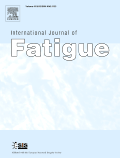
International Journal of Fatigue
Scope & Guideline
Connecting researchers to the pulse of fatigue science.
Introduction
Aims and Scopes
- Fatigue Mechanisms and Behavior:
Research on the fundamental mechanisms of fatigue, including crack initiation and propagation, the role of microstructure, and the effects of environmental factors on fatigue performance. - Life Prediction Models:
Development and validation of models for predicting fatigue life under various loading conditions, including both low-cycle and high-cycle fatigue, and the integration of machine learning techniques for enhanced predictions. - Material Characterization:
Investigation of the mechanical properties and fatigue behavior of various materials, including metals, alloys, composites, and advanced manufacturing techniques like additive manufacturing. - Experimental Techniques:
Application of advanced experimental methods, such as digital image correlation, acoustic emission, and in-situ monitoring techniques, to study fatigue behavior and damage mechanisms. - Multiaxial and Variable Amplitude Fatigue:
Exploration of fatigue behavior under complex loading scenarios, including multiaxial fatigue and variable amplitude loading, to better understand real-world applications. - Corrosion and Environmental Effects:
Analysis of the impact of corrosion, temperature, and other environmental factors on the fatigue performance of materials, contributing to the understanding of service life in various conditions.
Trending and Emerging
- Machine Learning and AI Integration:
A significant trend is the incorporation of machine learning and artificial intelligence in fatigue life prediction and analysis, allowing for more accurate and efficient modeling based on large datasets. - Additive Manufacturing Fatigue Studies:
Research focusing on the fatigue behavior of materials produced via additive manufacturing techniques is rapidly increasing, highlighting the unique challenges and characteristics of these materials. - Multiscale and Multiphysics Approaches:
There is a growing emphasis on multiscale and multiphysics modeling approaches that integrate various physical phenomena, such as thermal effects and microstructural changes, into fatigue analysis. - Corrosion Fatigue and Environmental Interactions:
Studies examining the interactions between corrosion and fatigue, particularly in extreme environments, are gaining traction as industries seek to improve the durability of materials in challenging conditions. - Fatigue of Composite Materials:
An increasing number of publications are dedicated to the fatigue behavior of composite materials, reflecting their growing use in aerospace and automotive applications. - Sustainability and Fatigue Performance:
Emerging research is focusing on the sustainability aspects of materials and their fatigue performance, exploring how recycled materials and eco-friendly practices can influence fatigue behavior.
Declining or Waning
- Traditional Fatigue Testing Approaches:
There is a noticeable decline in studies focusing on conventional fatigue testing methods, as researchers increasingly turn to advanced computational models and machine learning techniques for fatigue analysis. - Static Strength Evaluation:
Research centered solely on static strength evaluation in fatigue studies is becoming less common, with a greater emphasis now placed on dynamic loading conditions and their effects on fatigue behavior. - Single Material Studies:
The journal has seen a reduction in papers dedicated to single-material fatigue studies, as interdisciplinary approaches involving composite materials and hybrid structures gain popularity. - Basic Fatigue Life Models:
Basic empirical models for fatigue life prediction are being overshadowed by more complex, physics-informed approaches that consider multiple variables and real-world conditions.
Similar Journals

STRENGTH OF MATERIALS
Illuminating the path of material performance analysis.STRENGTH OF MATERIALS is a prestigious journal published by SPRINGER that focuses on the critical field of mechanics of materials, providing an authoritative platform for the dissemination of research and developments in material strength analysis since 1969. With an ISSN of 0039-2316 and an E-ISSN of 1573-9325, this journal serves a global audience of researchers, professionals, and students, contributing essential insights into the physical properties and performance characteristics of various materials under stress and strain. As part of the United States' academic literature, it showcases work that not only advances theoretical knowledge but also applies to practical engineering scenarios. Although ranked in the Q4 tier with respect to its category in Mechanics of Materials, with a Scopus rank of #319 out of 398 (19th percentile), it remains an important resource for those looking to expand their understanding in this specialized area. Researchers can access a wealth of information through this journal, fostering continued innovation and interdisciplinary collaboration.
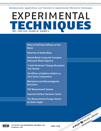
EXPERIMENTAL TECHNIQUES
Transforming Ideas into Experimental ExcellenceEXPERIMENTAL TECHNIQUES, an esteemed journal published by Springer, serves as a crucial platform for fostering innovation and research in the fields of Mechanical Engineering and Mechanics of Materials. Established in 1975 and continuing its legacy through to 2024, it aggregates a wealth of studies that exemplify rigorous experimental methodologies and emerging technologies. With its remarkable standing as a Q2 journal in Mechanical Engineering and Q3 in Mechanics of Materials, it ranks in the top half of its categories on Scopus, indicating its relevance and impact in the academic community. While the journal is not open access, it ensures accessibility to high-quality research findings essential for advancing knowledge and expertise among researchers, professionals, and students alike. EXPERIMENTAL TECHNIQUES continues to be a vital resource for those involved in the dynamic landscape of experimental mechanics, aiming to push boundaries and explore new frontiers in engineering.
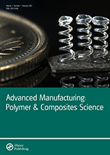
Advanced Manufacturing-Polymer & Composites Science
Unlocking the Potential of Composites in ManufacturingAdvanced Manufacturing-Polymer & Composites Science, published by Taylor & Francis Ltd, is a prominent open-access journal dedicated to the cutting-edge fields of polymer and composite materials in advanced manufacturing. With an ISSN of 2055-0340 and an E-ISSN of 2055-0359, this journal has been providing researchers, professionals, and students critical insights since its inception in 2015. The journal is characterized by its pivotal role in disseminating high-quality research that intersects with crucial areas such as Electrical and Electronic Engineering, Management of Technology and Innovation, and Polymers and Plastics, as indicated by its Q3 and Q2 rankings across these categories in 2023. In addition, it has established a significant presence in Scopus rankings, reflecting its contribution to the academic community with specific ranks in the top half of its fields. Recognizing the importance of open access, the journal fosters wider dissemination of knowledge, allowing global access to groundbreaking studies that influence both research and practical applications. Operating from the United Kingdom, Advanced Manufacturing-Polymer & Composites Science continues to pave the way for innovation and collaboration in the field, making it an essential resource for anyone involved in materials science and engineering.
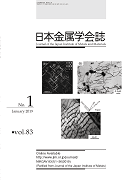
Journal of the Japan Institute of Metals and Materials
Illuminating the future of materials science and engineering.Journal of the Japan Institute of Metals and Materials (ISSN: 0021-4876, E-ISSN: 1880-6880) serves as a vital academic platform under the esteemed auspices of the Japan Institute of Metals & Materials. This journal, with a rich publication history dating back to 1937, focuses on advancing knowledge in the fields of metallurgy, materials science, and engineering, making it an important resource for researchers, professionals, and students alike. Although the journal has been categorized in Q4 quartiles across several subject areas, including Condensed Matter Physics and Materials Chemistry, it plays a critical role in disseminating essential findings and fostering discussion regarding innovations in metal and materials research. Notably, the journal operates without open access, which encourages targeted readership engagement through its curated content. Based in Japan, it continues to contribute significantly to the academic community by bridging the gap between scientific inquiry and practical application in materials technology.

Frattura ed Integrita Strutturale-Fracture and Structural Integrity
Advancing the Science of Structural IntegrityFrattura ed Integrita Strutturale - Fracture and Structural Integrity is a prominent open-access journal published by GRUPPO ITALIANO FRATTURA since 2007, dedicated to advancing the fields of Civil and Structural Engineering, Mechanical Engineering, and Mechanics of Materials. With an E-ISSN of 1971-8993, this journal has established itself as a significant platform for researchers and practitioners in the engineering community, offering an accessible outlet for high-quality research and innovative methodologies. The journal has achieved impressive standings in the Scopus ranks, notably being positioned in the second quartile (Q2) across its relevant categories in 2023, indicating its growing influence and the quality of the research it disseminates. With a publishing scope extending from 2011 to 2024, Frattura ed Integrita Strutturale continues to be an invaluable resource for addressing the mechanics of material integrity and fracture phenomena, inviting contributions that advance understanding and foster multidisciplinary dialogue. By prioritizing open access, the journal ensures that vital research is readily available to a global audience, enhancing collaboration and knowledge sharing among academia and industry alike.
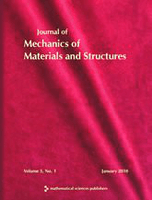
Journal of Mechanics of Materials and Structures
Pioneering Developments in Mechanics of Materials and Structures.Journal of Mechanics of Materials and Structures, published by Mathematical Science Publishers, is a distinguished periodical in the field of Applied Mathematics and Mechanics of Materials. With the ISSN 1559-3959, this journal has been a pivotal platform since its inception in 2006, providing insights and advancements in the mechanics of materials and their structural applications. Operating out of the University of California, Berkeley, this journal not only boasts a respectable standing within its categories, ranking Q4 in Applied Mathematics and Q3 in Mechanics of Materials as of 2023, but it also serves a crucial role in fostering academic discourse among researchers, practitioners, and students alike. Although it does not currently offer open access, its contributions to the respective fields are invaluable, underscoring the relevance and importance of continued research in understanding material behavior and structural integrity. Whether investigating theoretical frameworks or engineering applications, the Journal of Mechanics of Materials and Structures remains an essential resource for anyone dedicated to the advancement of the science of materials and structures.
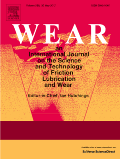
WEAR
Advancing Knowledge in Micro and Nanoscale MaterialsWEAR is a premier journal published by Elsevier Science SA, specializing in the field of materials science, particularly in the dynamics of wear and friction at the micro and nanoscale. Since its inception in 1957, this esteemed journal has evolved into a critical resource for researchers, professionals, and students alike, showcasing cutting-edge research and developments that significantly impact the disciplines of Condensed Matter Physics, Mechanics of Materials, Materials Chemistry, and Surfaces and Interfaces. With an impressive impact factor and consistently recognized as a Q1 category journal across various Scopus rankings, WEAR ranks in the top tiers of its field, underscoring its importance and influence within the academic community. The journal serves as a vital platform for disseminating innovative findings and applications, fostering scholarly dialogue, and advancing the understanding of material behaviors under wear and friction processes. For those keen on accessing the latest research in these dynamic areas, WEAR is an indispensable resource, promising a comprehensive collection of high-quality articles that reflect the forefront of scientific inquiry.

Structural Integrity and Life-Integritet I Vek Konstrukcija
Enhancing Safety and Reliability in Construction.Structural Integrity and Life - Integritet I Vek Konstrukcija is a prominent open-access journal dedicated to advancing the fields of Civil and Structural Engineering, Mechanics of Materials, and Safety, Risk, Reliability, and Quality. Published by the SOC STRUCTURAL INTEGRITY & LIFE, this journal has been disseminating high-quality research since 2001 from its base in Belgrade, Serbia. The journal's commitment to open access ensures that vital research is freely accessible to a global audience, fostering collaboration and innovation within the academic community. With an impressive categorization in the 2023 quartiles, including Q2 in Metals and Alloys and Q3 in related fields, Structural Integrity and Life stands as a vital resource for researchers, professionals, and students striving to enhance understanding and applications in structural integrity and material performance. The journal invites contributions that address critical issues in the field, pushing the boundaries of knowledge and practical applications, and welcomes both empirical studies and theoretical discussions that can drive forward the next generation of engineering solutions.
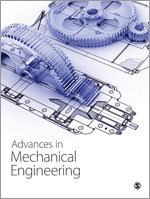
Advances in Mechanical Engineering
Unlocking Potential in Mechanical Engineering ExcellenceAdvances in Mechanical Engineering is a premier open-access journal published by SAGE Publications Ltd, dedicated to the advancement of theoretical and applied research in the field of mechanical engineering. With an ISSN of 1687-8132 and an E-ISSN of 1687-8140, this journal has been a vital resource for scholars and practitioners since its inception in 2009. Housed in the United States, it operates under a commitment to ensure free and immediate access to its high-quality content, enhancing collaboration and innovation across the global engineering community. With a noteworthy Q2 ranking in the mechanical engineering category and a solid Scopus rank placing it in the 59th percentile, the journal serves as an influential platform for cutting-edge research, theoretical advancements, and comprehensive reviews. As the field evolves, Advances in Mechanical Engineering continues to cater to the rigorous needs of researchers, professionals, and students, striving to transform knowledge into tangible engineering solutions. This journal's commitment to excellence makes it a significant contributor to the mechanical engineering field, encouraging dynamic discussions and implications for the future.

INTERNATIONAL JOURNAL OF FRACTURE
Fostering Global Dialogue on Fracture ApplicationsInternational Journal of Fracture, published by Springer, stands as a leading peer-reviewed platform dedicated to advancing the field of fracture mechanics and its applications. Since its inception in 1973, this journal has provided a crucial forum for innovative research and discussions, addressing pivotal topics in computational mechanics, mechanics of materials, and modeling and simulation. With a significant impact factor and a Q1 classification in computational mechanics, it ranks impressively within the Scopus metrics, further solidifying its relevance among global researchers and professionals. The journal caters to an international audience by fostering the exchange of knowledge and cutting-edge discoveries, making it an essential resource for those engaged in the latest advancements and applications in material fracture studies. Its commitment to high-quality research ensures that the findings published within its pages not only contribute to academic discourse but also influence real-world engineering and manufacturing practices.